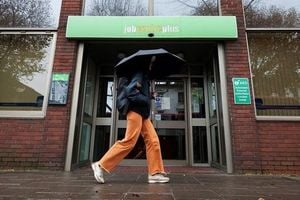India’s middle class has long been described as the engine of its economic growth, but as the country marks its 78th year of independence, this influential group finds itself at a crossroads—caught between newfound prosperity and mounting pressures at home and abroad. On August 16, 2025, Prime Minister Narendra Modi delivered a rousing speech promising a "self-reliant India," a vision shaped by both domestic aspirations and global challenges, most notably the United States’ recent imposition of steep tariffs on Indian goods.
Today, nearly a third of India’s population identifies as middle class, according to Finshots. This demographic, once a tiny sliver of British-trained professionals, now numbers over 30 crore people and is poised to nearly double by 2047, when India celebrates a century of independence. By then, projections suggest the middle class will comprise close to 60% of the nation’s population. But the definition of "middle class" itself has evolved. While a decade ago, households with a disposable income of ₹6–7 lakhs a year fit the bill, researchers at the People Research on India’s Consumer Economy (PRICE) now classify the group as those earning between ₹5 lakhs and ₹30 lakhs annually. This wide range reflects India’s complex and rapidly changing economic landscape.
Modi’s Independence Day address was laden with nationalist rhetoric and a clear message: India would not allow itself to become dependent on imports, whether microchips or fighter jet engines. “I want to tell our citizens, our youth and everyone who understands the power of technology that by the end of this year, ‘Made in India’ semiconductor chips will be available in the market,” Modi declared, as reported by UkrAgroConsult. This pledge comes at a time when the US, India’s largest trading partner, has imposed a 50% tariff on Indian imports—first a 25% hike on July 1, then a secondary 25% duty targeting purchases of Russian oil. The move has strained the strategic partnership between the two countries, rekindling a sense of mistrust toward the West among many Indians.
Despite the tension, Commerce Minister Sunil Bartwal assured reporters on August 14 that India remains "fully engaged in trade talks with the US." But the sense of urgency was palpable in Modi’s speech, as he outlined a series of tax and regulatory reforms designed to benefit both business and the middle class—voters who are crucial to the ruling Bharatiya Janata Party’s base. Among the most significant are plans to reform the Goods and Services Tax (GST) and introduce "next-generation VAT reforms" by October 2025, promising relief for middle-class taxpayers.
This is a group that has always been aspirational, driving demand for everything from two-wheelers to smartphones. The government’s new tax regime quietly acknowledges this, offering breaks to those earning between ₹4‒12 lakhs a year. In fact, starting from the 2025–26 financial year, anyone earning below ₹12 lakh will pay no income tax at all—a dramatic shift from a decade ago, when middle-class tax rates ranged from 10% to 20%. Now, that burden has dropped to between 5% and 15%, leaving more money in the pockets of millions of families.
But the middle class’s journey has not been a straight line. Back in 1947, India’s population stood at 35 crore, but only 1–5% could be considered middle class—those with reliable food, shelter, and a stable job. For decades, this group grew slowly, hampered by the "license raj" and an economy shielded from foreign competition. It wasn’t until the economic reforms of the early 1990s that things changed dramatically. As Finshots notes, GDP growth, once stuck below 4% a year, surged to 6–7% after liberalization, and millions of new jobs appeared in technology, services, and manufacturing.
The consumer revolution was unmistakable. Between 1970 and 1980, annual sales of scooters, motorcycles, and mopeds nearly quadrupled to over 400,000 units. Car and jeep sales nearly doubled to 60,000 annually between 1975 and 1981. Production of cookies jumped by nearly 50%, wristwatches by 20%, and toothpaste by 23%. Soft drink sales doubled to 1.7 billion bottles. By the early 1980s, even the humble video cassette recorder had become a must-have item for urban families.
With liberalization, the middle class exploded in both size and confidence. Affordable cars like the Maruti 800 and Tata Nano made four-wheelers commonplace by 2010, and today, 85% of Indian households own a smartphone. In rural areas, three out of four mobile users have one. Banking, shopping, and even education are now just a tap away, thanks to cheap internet and affordable devices. This is the "aspirational India" that became a lower-middle-income economy in 2018 and is determined to keep climbing.
Yet, beneath the surface, challenges persist. While the number of poor has declined, the average income of the middle class has stagnated, and their spending power is under threat. In 2012, Indian households saved eight times more than they owed in debt. Now, that figure has halved to just four times. Credit card defaults overdue by 91–360 days have soared 44% in a single year, reaching nearly ₹34,000 crores, according to The Indian Express. Many families, it seems, are living the dream life on borrowed money.
The cost of living has also surged. In Delhi, for example, a basic 1,000 sq. ft. apartment now costs around ₹1 crore—over 12 years of average salary, assuming an annual income of ₹8 lakhs and not even accounting for interest on loans. Essentials and luxuries alike have become pricier, and while inflation data may suggest some cooling, the reality for many is a constant struggle to balance aspirations with affordability.
The government, aware of these pressures, has tried to sweeten the deal. Tax slabs are more generous, and financial literacy is on the rise. This Independence Day weekend, a special two-day event offers masterclasses on life and health insurance, aiming to help families secure their financial futures and avoid overspending on protection. It’s a sign of the times: as the middle class grows, so too does the need for smarter financial planning.
Meanwhile, India’s global ambitions are being tested. The US tariffs have stunned many and rekindled old suspicions, especially given India’s longstanding ties with Russia. Modi’s promise of "Made in India" semiconductor chips is both a rallying cry and a necessity, as the country seeks to reduce its dependence on foreign technology and assert its place in the global supply chain.
So where does the middle class go from here? Will their numbers double by 2047, as projected, or will economic headwinds slow their ascent? The truth, as always, is likely somewhere in between. What’s certain is that the middle class remains a powerful force—shaping what India buys, how it votes, and the country’s place in the world. Their journey from a tiny elite in 1947 to a diverse, sprawling, and aspirational group today is nothing short of remarkable. And as India navigates the challenges of a shifting global order, it’s clear that the middle class will be at the heart of whatever comes next.





